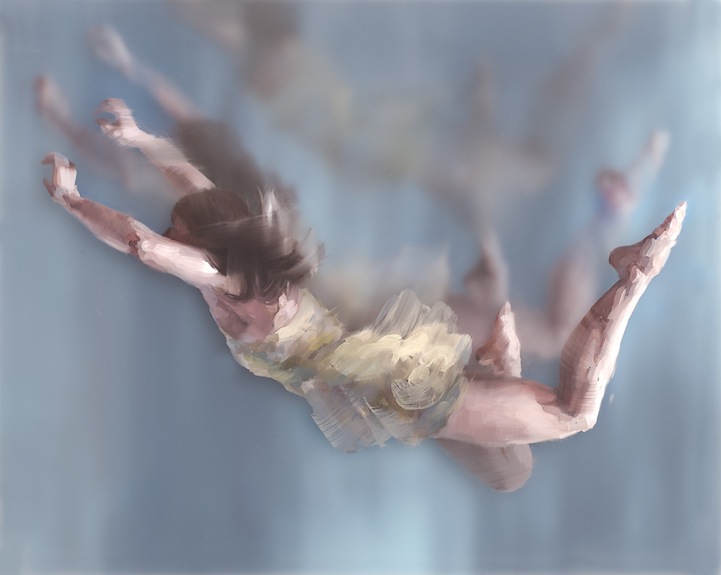Liminality (from the Latin word līmen, “threshold”) is the ambiguity that emerges in the middle of a fundamental transition. Liminality is the “in-between”, where the space and the participants no longer hold their past status, but have not yet fully transformed to their post-transition self.
Liminality can be applied to a person standing at the threshold between their previous way and a new way of structuring their identity, their time, or their community. Think about a student who just submitted their last essay but has not graduated yet; an employee who’s being transferred soon but has not started their new role; a couple who’s engaged but not married.
It can refer to a place, from an airport to a no-man’s land, or a reception room after the event has finished, the guests have left, but the leftovers on the dinner table still hold the memories of a shared meal.
Societies also go through liminal periods, where a “collapse of order” leads to an axial age, defined by philosopher Karl Jaspers as a period where the undisputed understanding of life is challenged, and where radical questions need to be asked. Both destructive and constructive, liminal events — such as political revolutions, wars, and economic crises — shape the societal patterns that arise during these large-scale transitions.
Whether it refers to people, places, or societies, liminality provides a playground for transformation, a game with no rules we’re all invited to join, a sandbox for liminal creativity.
The paradox of liminal spaces
Losing a job, taking on a new challenge, preparing to launch a project, deciding to raise a family, moving to a new country, living through a societal revolution: the world’s chaotic flows force us all to walk through liminal spaces at one point or another during our lives.
Liminality is so omnipresent, many cultures worship liminal deities: gods or goddesses who preside over thresholds, guardians of gates, crossers of boundaries. Enodia, the goddess of crossroads in Greek mythology; Janus, the dual-faced god of beginnings and endings in Roman mythology; Menshen, the divine protectors of doors in Chinese mythology.
Even stripped from these ancient narratives, our lives are still full of liminal spaces: when we’re not children anymore but not adults yet; when we know we’re leaving but haven’t said goodbye; when we’re lost but still hope to find our way.
Just like twilight is a liminal time between day and night, critical life stages and large societal shifts create liminal spaces that offer risks and opportunities, arenas that expand our perception of possibles.
What happens in liminal spaces? Doubt, discomfort, unfamiliarity, anxiety. But also growth, change, and discovery. Liminal spaces offer all of the ingredients for creativity.
Liminal creativity is new ideas emerging from the unknown, identities changing through challenges, innovations sprouting in the midst of chaos, new beginnings built from the remains of failures.
Our brain is uncomfortable in liminal spaces. Fear of uncertainty is an evolutionary mechanism designed to protect us from unknown risks. Our brain resists change and seeks predictable patterns.
Still, some people seem to be more comfortable than others in liminal spaces. They crave transformation, often changing jobs or careers, moving places, persistently looking for surprising ideas and working on new projects. Once they reach a certain level of comfort, they start searching for the next rite of passage — the next liminal space.
In the words of neuroscientist Gregory Berns, “only when you consciously confront your brain’s reliance on categories will you be able to imagine outside of its boundaries.” Venturing out of the mind’s perimeter of comfort, in a constant quest for the unknown, liminal creators keep on fueling their imagination by exploring the gray areas that live outside of established categories.
Creativity in the age of change
As Heraclitus famously said, “change is the only constant in life.” The hero’s journey is a never-ending cycle of change, where the hero reinvents themself and comes home transformed, before starting a new adventure. Similarly, life is a creative adventure that requires becoming comfortable with discomfort, a journey where we continually experiment, make mistakes, learn, and grow.
And some of the biggest turning points in our story happen in the uncomfortable yet liberating liminal spaces where we are free to express our creativity. Though not exhaustive, here are some guiding principles to embrace liminal creativity:
- Explore the edge. Roam the edge of practices, where they permeate several trends and communities, creating gateways between worlds of ideas; push the boundaries of knowledge by connecting seemingly unrelated ideas; direct your curiosity towards questions that haven’t even been formulated yet. The poet Alison Hawthorne Deming wrote: “In ecology, the term edge effect refers to a place where a habitat is changing — where a marsh turns into a pond or a forest turns into a field. These places tend to be rich in life forms and survival strategies.” Similarly, liminal creativity happens where thought spaces overlap, such as the crossroads between science and spirituality, art and technology, fashion and politics, history and futurism.
- Get in the flow. When everything around you is shifting and evolving, you need to accept that the only thing you have authority over is your attention. Let your ever-changing world fuel your inspiration without becoming a distraction. Direct your attention toward the liminal space emerging from those transitional states. Ask yourself: where do I want to funnel my creative energy? Then, focus on the task while letting go of the illusion of control.
- Make friends with your fears. Uncertainty is scary. Our fear of failure and our fear of judgement are deeply encoded in our social cognition. But fear is a precious source of information. What risks is our brain trying to protect us from? How can those risks be mitigated while allowing for personal growth? Liminal creativity requires courage to explore your fears instead of ignoring them, to get comfortable with uncertainty, and to consider the unknown as an opportunity for learning.
- Create liminal rituals. In the morning before everyone wakes, on the plane while traveling somewhere, between two work projects… Use these liminal spaces to create your own rituals, whether it’s journaling, doodling, deliberately importing your favorite Kindle highlights into your note-taking app, removing weeds from your mind garden, or writing atomic essays. Claim those in-between moments to express your creativity, unhindered by social rules that define the structure of your usual schedule.
- Reinvent yourself. Shapeshifters are the quintessential liminal beings. What better expression of liminal creativity than reinventing yourself? “An autobiographical occasion is any moment when we are encouraged or obliged to reimagine who we are. It’s a narrative event, when our existing life story is altered or redirected in some way, forcing us to revisit our preexisting identity and modify it for our life going forward. And nearly everyone goes through such moments,” explains Bruce Feiler. Or, as one of my favorite comics says: “It takes about seven years to master something. If you live to be 88, after age 11, you have 11 opportunities to be great at something. Those are your lifetimes. Use them.” Do not fall prey to the self-consistency fallacy. Learn something new. Change careers. Take a risk. Reimagine your identity. Live all of your lifetimes.
- Embrace slow transitions. We tend to romanticize “big jumps”, where we quickly move from one clear status to another one. Survivorship bias leads to the celebration of heroic figures who made such big jumps and were successful. Big jumps make it easier to answer the question: “So, what do you do?”. But spending more time in the uncertain in-between leaves more room for experimentation, so we can figure out what works and what doesn’t. Instead of quitting your job to start a business, work on a few side projects. Instead of packing your things to move across the country, visit a few places and keep a travel log. Take your time to gather insights contributing to an informed decision, and only complete the transition when you feel ready.
- Document the change. The most interesting transformations happen in liminal spaces, but it’s easy for your new self to forget where you came from and the details of your journey. In the words of Salman Rushdie: “Never forget that writing is as close as we get to keeping a hold on the thousand and one things — childhood, certainties, cities, doubts, dreams, instants, phrases, parents, loves — that go on slipping, like sand, through our fingers.” Whether it’s through words or images, publicly or privately — take the time to capture your own story.
The ideas and identities that are born in the chaos of change are ours to forge. Liminal creativity can help carve a path from disorientation to discovery, from uncertainty to curiosity, from fear to innovation. It can turn scary situations into transformational experiences of self-discovery and self-authorship. In fact, life itself is a liminal space between birth and death.


